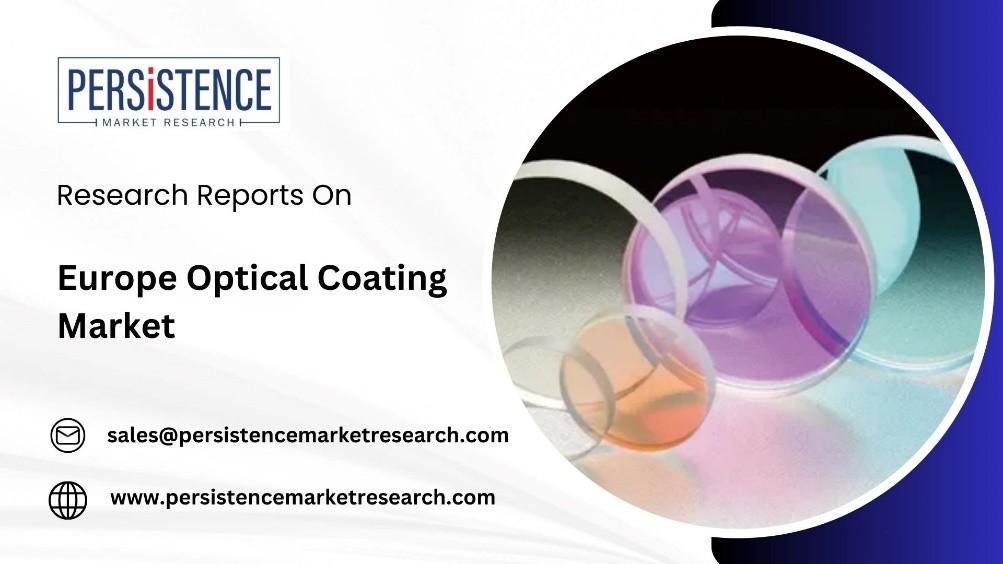Europe’s EV Revolution Puts Optical Coatings in the Driver’s Seat
The Europe optical coating market is set to grow significantly, with a projected CAGR of 8.6% from 2024 to 2031, increasing from US$ 1.2 billion in 2024 to US$ 2.2 billion by 2031. This growth is largely driven by regulatory pressures focusing on energy efficiency and sustainability, particularly within the EU's commitment to reducing carbon emissions. The region’s automotive industry, especially the rise in electric vehicles (EVs), is fostering demand for advanced optical coatings. Additionally, innovations in optical technologies and strong research support are further driving market expansion. Germany is expected to lead this growth, with reflective coatings and vacuum deposition technologies seeing significant demand, particularly in automotive and healthcare sectors. The market is also witnessing rising interest from space research centers.

As Europe races toward a greener, electrified future, a quiet yet powerful technology is gaining traction at the heart of this transformation: optical coatings. Once a specialized solution for hightech applications, optical coatings have become mission-critical for the rapidly expanding electric vehicle (EV) industry. From safety systems and driver interfaces to battery management and lighting, these microscopic layers of engineered material are enhancing performance, safety, and sustainability.
With the European EV market expected to continue its meteoric rise—fueled by strict emissions regulations, consumer demand, and government subsidies—the demand for innovative optical coatings is surging. This synergy is placing optical coatings firmly in the driver’s seat of Europe’s automotive revolution.
The EV Boom: A Perfect Storm for Optical Coatings
Europe is undergoing one of the most aggressive EV transitions globally. Countries like Norway, Germany, France, and the Netherlands are leading in EV adoption, while the European Union has laid out a roadmap to phase out internal combustion engines by 2035. This shift is transforming vehicle design, supply chains, and material needs—creating a perfect environment for the growth of the optical coating market.
Unlike traditional vehicles, EVs rely heavily on advanced optics in every aspect—from LiDAR and camera systems for autonomous functions to high-definition infotainment and energy-efficient lighting. These systems depend on optical coatings to function reliably and efficiently, especially under variable driving conditions.
Sensor-Rich Vehicles Need Advanced Optical Coatings
Modern EVs are sensor-dense platforms. Adaptive cruise control, lane detection, pedestrian monitoring, and autonomous driving features are powered by a web of cameras, LiDAR, and infrared sensors. These sensitive optical systems must operate with extreme precision and durability.
Optical coatings enhance the performance of these sensors by improving light transmission, reducing reflection, protecting against moisture and abrasion, and ensuring clarity across temperature variations. Anti-reflective and hydrophobic coatings, for example, allow sensors to function accurately in rain, fog, or snow—critical for EV safety and autonomy.
As automakers ramp up production of Level 2 and Level 3 autonomous EVs, demand for these coatings is scaling accordingly.
User Experience and Smart Interiors Drive Display Coating Demand
Electric vehicles are more than just a mode of transport—they’re becoming digital living spaces. Large touchscreen interfaces, augmented reality dashboards, and integrated infotainment systems are hallmarks of the EV user experience.
To meet user expectations, optical coatings are used on displays and glass surfaces to improve contrast, reduce glare, resist fingerprints, and enable touch sensitivity. These coatings not only enhance aesthetics and usability but also extend the lifespan of electronic components in sunlightexposed interiors.
European premium automakers like Mercedes-Benz and Audi are setting new benchmarks for interior display sophistication, which in turn raises the bar for optical performance and durability.
Energy Efficiency at the Microscopic Level
Efficiency is the lifeblood of EVs—every watt matters. Optical coatings contribute to this efficiency in surprising ways. For instance, low-emissivity (low-E) coatings on automotive glass can help regulate cabin temperature by reflecting infrared radiation, reducing the need for air conditioning and preserving battery life.
Similarly, coatings on LED lighting systems improve light output and directivity while minimizing energy consumption. As OEMs look to stretch range and reduce environmental impact, these microscopic innovations are making a macro difference.
